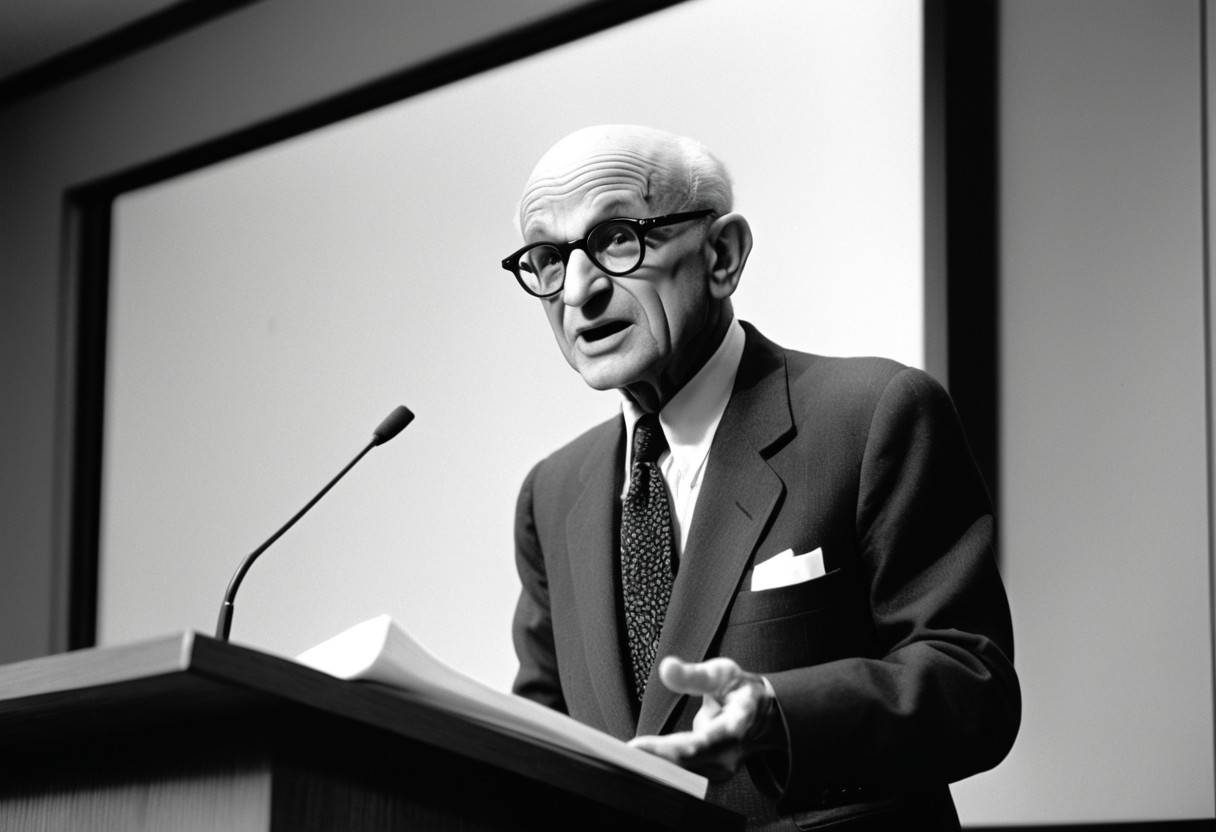Money is an integral part of our everyday lives and I doubt anyone would deny that it plays a key role in the economy. But while there are several theories of money, one school of economic thought maintains that increasing money supply inevitably leads to higher prices and inflation, and vice versa. This school of thought is known as “monetarism” or the “monetarist theory.”
This article breaks into the nitty-gritty of monetarism – what it is, its history, and how it works.
What is Monetarism?
Developed in the latter half of the 20th century, monetarism challenged conventional economic wisdom and offered a distinct perspective on the role of money supply in influencing economic variables such as inflation, employment, and growth.
At its core, monetarism is a macroeconomic theory that emphasizes the primary role of money supply in determining the overall level of economic activity and prices within an economy. This theory was pioneered by influential economists like Milton Friedman, who argued that fluctuations in the money supply are the principal drivers of economic instability, and that monetary policy should be the primary tool for managing economic growth and stabilizing prices.
History of the Monetarist Theory
The origins of monetarism can be traced back to the classical economic theories of the 18th and 19th centuries. However, it was not until the mid-20th century that monetarism gained widespread attention and recognition.
The Great Depression of the 1930s and the subsequent Keynesian revolution challenged classical economic theories and shifted the focus toward fiscal policy and government intervention as the primary tools for managing economic fluctuations. Keynesians argued that changes in government spending and taxation could effectively influence aggregate demand and steer the economy toward full employment and stable prices.
In the aftermath of World War II, as economies grappled with inflationary pressures and economic instability, economists began to question the efficacy of Keynesian policies. It was during this period that Milton Friedman, an influential American economist, emerged as a prominent figure in the development of monetarism, which was initially posited by economist Clark Warburton.
Friedman’s seminal work, “A Monetary History of the United States, 1867-1960,” co-authored with Anna Schwartz, provided a comprehensive analysis of the role of money supply in shaping economic events, including the Great Depression. This work laid the foundation for Friedman’s monetarist theory, which challenged the prevailing Keynesian orthodoxy and advocated for a renewed focus on monetary policy as the primary tool for economic stabilization.
The K-percent Rule
Friedman advocated for a monetary policy approach known as the K-percent rule. This rule stipulated that the central bank should target a predetermined and unchanging rate of growth for the money supply. The recommended growth rate would be anchored to the projected expansion of the nominal gross domestic product (GDP), expressed as a fixed annual percentage increment.
Under the K-percent rule, the central bank would commit to a predetermined and publicly announced percentage increase in the money supply each year. This rate would remain fixed and automatic, without discretionary adjustments or deviations based on short-term economic conditions or political influences. The rule’s proponents argued that this rigidity would enhance transparency and credibility, and insulate monetary policy from potential biases or external pressures.
The rationale behind this approach was rooted in the monetarist belief that variations in the money supply are the primary driver of inflation and economic instability. By establishing a constant and well-defined growth path for the money supply, the central bank could anchor inflation expectations and minimize the risk of destabilizing shocks or policy errors.
Key Principles and Assumptions of Monetarism
- Stability of the Money Demand Function: A central tenet of monetarism is the assumption that the demand for money is stable and predictable. Monetarists argue that individuals and businesses hold money for three primary reasons: transaction purposes (to facilitate everyday purchases), precautionary purposes (to have a buffer for unexpected expenses), and speculative purposes (to take advantage of investment opportunities).
According to monetarists, the demand for money is primarily determined by a few key variables, such as real income, interest rates, and wealth levels. By understanding and estimating the demand for money, monetarists believe that policymakers can effectively manage the money supply to achieve desired economic outcomes.
- Money Supply as the Primary Driver of Inflation and Economic Activity: Monetarists assert that changes in the money supply are the primary determinant of inflation and overall economic activity in the long run. They believe that an excessive increase in the money supply will lead to inflationary pressures, while a decrease in the money supply can contribute to economic slowdowns or recessions.
This principle is based on the quantity theory of money, which states that the general price level is directly proportional to the money supply. Monetarists argue that when the money supply grows faster than the growth in real output, the excess supply of money will bid up prices, leading to inflation.
- Long-Run Neutrality of Money: Monetarists subscribe to the idea of the long-run neutrality of money, which means that changes in the money supply do not have a lasting impact on real economic variables, such as output, employment, or real interest rates, in the long run. They argue that in the long run, the economy will adjust to changes in the money supply and any temporary deviations from full employment or potential output will eventually be corrected.
However, monetarists acknowledge that in the short run, changes in the money supply can have temporary effects on real economic variables due to price and wage rigidities, as well as lags in the adjustment process.
- Monetary Policy as the Primary Tool for Economic Stabilization: Given their belief in the primacy of money supply as a driver of economic activity, monetarists advocate for monetary policy as the primary tool for economic stabilization. They argue that central banks should focus on managing the growth rate of the money supply to achieve price stability and promote sustainable economic growth.
Monetarists emphasize the importance of rules-based monetary policy, where the central bank adheres to a predetermined rule for money supply growth, rather than relying on discretionary interventions. This approach is intended to provide a stable and predictable monetary environment, reducing uncertainty and minimizing the potential for policy errors or political influence on monetary decisions.
Real-World Examples
The monetarist principles espoused by Friedman and Schwartz gained prominence in the late 1970s when Paul Volcker assumed the chairmanship of the Federal Reserve. Prioritizing the fight against inflation, Volcker adopted a monetarist approach by restricting the money supply.
This strategy involved raising the federal funds rate to an unprecedented 20% in 1980. While severe, Volcker’s policies effectively addressed the “stagflationary” conditions plaguing the economy at the time, characterized by high inflation, high unemployment, and stagnant demand. By drastically reducing the money supply, Volcker’s actions curbed consumer spending and halted the upward spiral of prices, ultimately succeeding in taming inflation, albeit at the cost of recessionary periods between 1980 and 1982.
Concurrently, the United Kingdom was grappling with its own inflationary challenges. Upon assuming office as Prime Minister in 1979, Margaret Thatcher implemented a set of monetarist policies aimed at reining in rising prices. By 1983, these measures had effectively halved the country’s inflation rate, bringing it down from 10% to 5%.
However, the popularity and influence of monetarism proved to be relatively short-lived. During the 1980s and 1990s, the empirical link between the money supply and nominal GDP began to deteriorate, casting doubt on the quantity theory of money, which formed the backbone of monetarist theory. As a result, many economists who had previously advocated for monetarist policies in the 1970s gradually abandoned this approach, recognizing its limitations and the need for alternative economic frameworks.
Conclusion
The theory of monetarism, pioneered by Milton Friedman and his contemporaries, has left an indelible mark on the field of economics and the conduct of monetary policy. Despite its waning influence in recent decades, monetarism’s core principles and policy prescriptions continue to shape ongoing debates and serve as a reference point for policymakers and economists alike.
At its essence, monetarism postulated that fluctuations in the money supply were the primary driver of economic instability, inflation, and business cycles. By advocating for a rules-based approach to monetary policy, with a focus on targeting steady growth in the money supply, monetarists sought to promote price stability, minimize economic fluctuations, and depoliticize the central bank’s decision-making process.
















